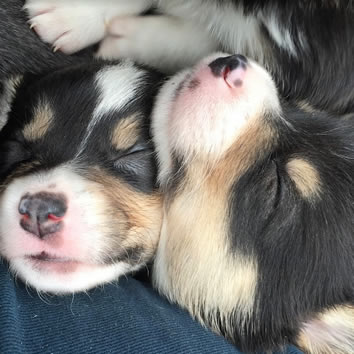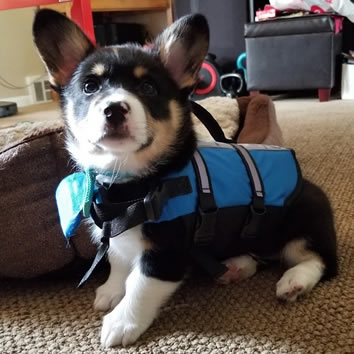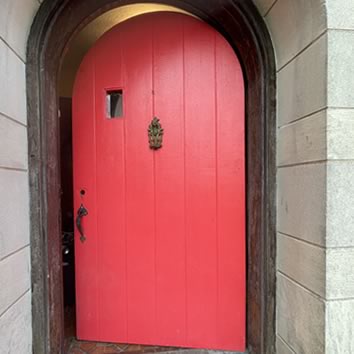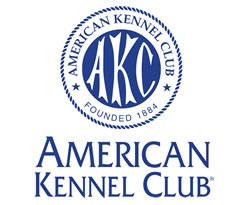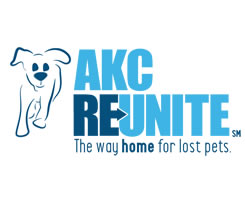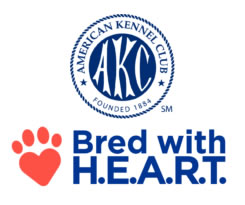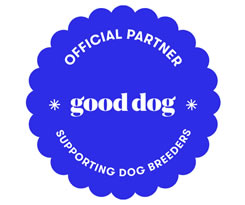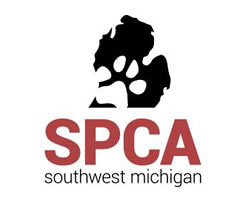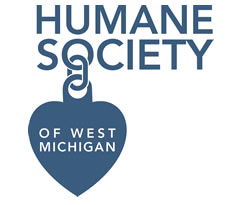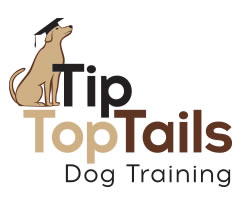

Corgis in a Blanket Adoption Process
Learn about our breeding philosophy, puppy cost, guarantees, and ultimately how to secure a forever home for a puppy.
Breeding
There are multiple variables, which must be considered, before breeding any animal. Age, genetics and temperament are but a few. At Corgis-In-A-Blanket, we adhere to the recommendations of MSU Veterinary School regarding age and breeding. We allow a dam to whelp her first litter at age two and we allow a sire to breed at age one. We also complete all recommended genetic testing for DM (Degenerative Myelopathy), VWD (Von Willebrand Disease) and EIC (Exercise Induced Collapse). Regarding temperament, we utilize the ATTS Temperament analysis measure, which assesses stability, shyness, aggressiveness, and friendliness as well as the dog’s instinct for protectiveness towards its handler and/or self-preservation in the face of a threat.
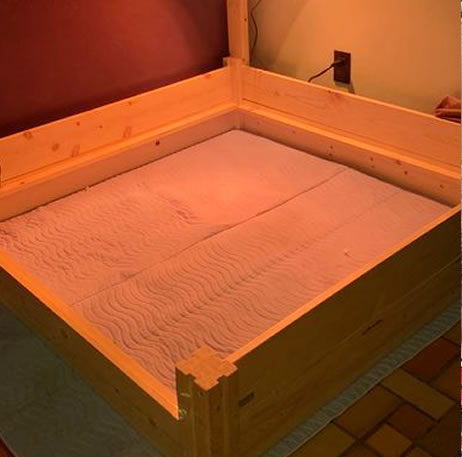
Labor and Delivery
The average duration of pregnancy for a dog is 58-63 days and the whelping process can vary greatly between dams and litters. Two weeks prior to the anticipated whelping date, we assemble the whelping crate and all the necessary supplies. This allows the dam to acquaint herself with the whelping area as well as providing a place for her to nest as she sees fit. The normal body temperature of a dog is between 101.0 and 102.5 degrees Fahrenheit. One week prior to the anticipated due date, we begin charting the dam's temperature twice a day. Approximately 24 hours before a dam delivers, her temperature will drop to or just below 99 degrees. This drop can happen quickly and can be short in nature. This is the beginning of the first stage of labor.
The first stage of labor generally lasts about 24 hours and, like humans, behavior during labor can vary greatly. Typical behaviors include, loss of appetite, panting, vomiting, pacing, whining, nesting, sleeping and everything in between. It totally depends on the individual dog.
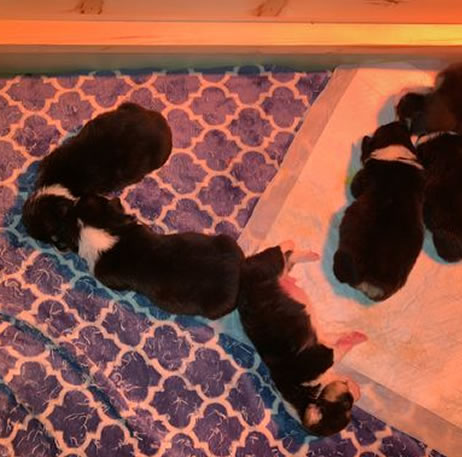
The second stage of labor is the actual delivery process. Each puppy has their own amniotic sack and the dam will typically deliver the puppy with 2-3 contractions. Once the puppy is delivered, she will remove the sac from the face of the puppy and begin licking the little one to stimulate breathing. Within 30 to 45 seconds, she will crush the umbilical cord with her teeth to cut off the blood supply and will eat the sac while continuing to clean the neonate (aka puppy. I just like the word neonate).
If, for some reason, the dam does not remove the sac in a timely manner, I step in and remove it for her. I then allow her continue the stimulation process and will again intervene and clamp the cord after about one minute if she has not already done so. The reason for the delay in clamping the cord relates to research out of the Michigan State University (MSU) veterinary school, which shows that in the 60 seconds post-delivery, the dam will lift the cord above the puppy's head and chew down towards the location where she will eventually sever the cord. This process utilizes gravity and forces important nutrients and antibodies into the circulatory system of the puppy.
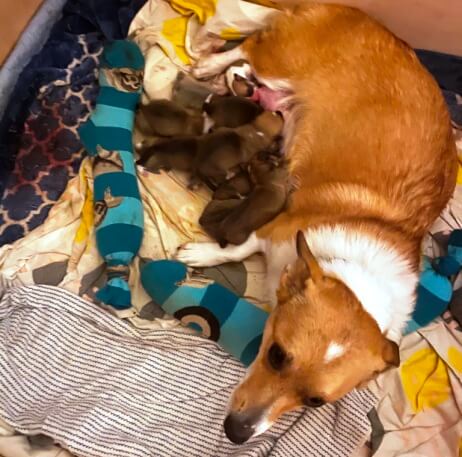
The dam will rest between deliveries and typically spends that time nursing and grooming the ones already delivered. The duration between births can be anywhere from a matter of minutes up to 2 hours. Hence you can understand how the delivery of a large litter can last up to 48 hours from start to finish.
The third stage of labor is the actual delivery of the placenta. During the birth process, the sac detaches from the placenta, which is attached to the wall of the uterus, and the puppy is born. The placenta is typically delivered shortly after the puppy, but not always. Occasionally, the placenta of the previous puppy will be delivered just before or with the next puppy. This is in no way problematic as the most important variable is assuring that by the end of the delivery of all puppies a placenta for each has been delivered.
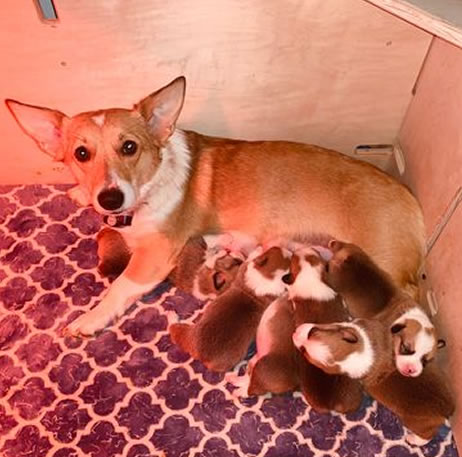
In the wild, a dam will consume the placenta as it contains a significant amount of nutrients, which her body will use to saturate her colostrum and milk with calories and antibodies. Due to the diet of domesticated dogs, this is not necessary and is actually discouraged as the consumption of too many placentas can lead to an upset stomach and subsequent vomiting. If the dam manages to consume a couple before I can retrieve them, this is not problematic; as long as the placenta has been observed before she consumes it and it is included in the final count. If left unaddressed, the retention of a placenta is likely to be fatal. Thankfully, this situation is generally easily remedied with an injection of oxytocin, which will detach the placenta from the wall and facilitate delivery.
Once the little one is successfully birthed, he/she is weighed and all pertinent information is recorded (i.e., date, time, specific markings, gender and weight) and a uniquely colored breakaway collar is placed around the neck of the puppy. Record keeping and proper identification are critical in order to assure accurate tracking of the health of each puppy and the litter as a whole. Each puppy is weighed 2 times a day for the first week and once a day during that second week of life. After that, barring no observed difficulties, the puppy is weighed weekly until the transition to his/her forever home.
Canine Development
Puppies are born blind, deaf, and toothless and are completely helpless. For the first 2-3 weeks they are unable to urinate or defecate on their own; hence mama stimulates them with her tongue and consumes their waste. In the wild, this would serve to hide the scent of her litter from potential predators. Although unnecessary in domesticated dogs, this is an instinct. Even though they will be able to eliminate waste long before 4-5 weeks of age, she will continue to "clean up" after them until the majority of their nutrition is from solid food as opposed to her milk.
Eyes generally begin to open between 10-14 days after birth with ears following shortly after at between 14-18 days. During their first 2 weeks of life, puppies crawl on their bellies and this movement is typically towards a teat for nursing or to sleep in a pile with siblings (hence the phrase “dog pile”). At around three weeks of age, they begin to support their weight on their tiny shaky legs for short durations of time and milk teeth will begin to erupt. This is when mama begins the weaning process, because well…those teeth are SHARP. By four weeks of age, they are actually beginning to walk, although with VERY little balance. This is when they begin to play with each other and this is one of my favorite developmental periods.

Transitions
At 4 weeks of age the dam and the puppies are moved downstairs to the main area of the house where the puppies are contained in a 12' x 12' gated area. Here the other dogs of the home are able to see, smell and engage (in a limited capacity) with the babies. Admittedly, this is a somewhat stressful, but a necessary time period for mama and the babies. She learns to be less protective and more trusting of the home environment as it pertains to her babies and they learn about the larger world of which they are a part.
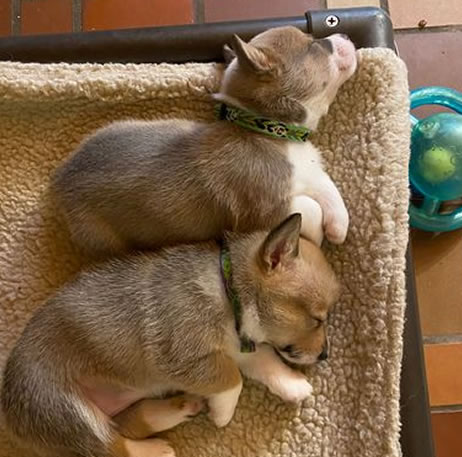
At 6 weeks of age, the puppies are set free in the house. This is an amazing and new adventure for them, but they MUST be watched diligently. During the previous 6 weeks, these little ones have entered the world, opened their eyes and their ears, have learned to eat solid food, learned to walk, learned to run, learned to climb and depending on the time of year, have experienced the great outdoors that Michigan has to offer. They are ready for adventure. THEY CAN DO ANYTHING!!! Or so they think.
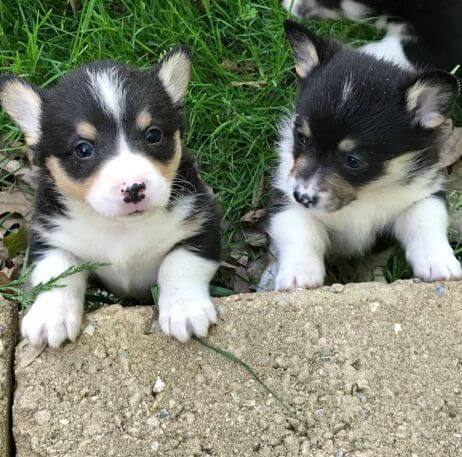
We differ from many breeders who release their puppies at 6 weeks of age. Are puppies physiologically ready to move away from their mother at this time? Yes, however, the time between 6 and 8 weeks is critical for the individual emotional development of a puppy. Between the ages of 6 and 8 weeks, puppies learn their place within the pack order. If there is a dog in the home, then there is a pack. It may be a small pack or it may be a large pack, but at the end of the day, there is a pack and there must be a pack leader. This pack leader MUST be a human being!
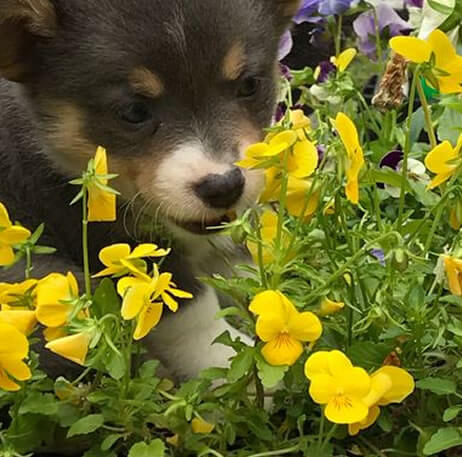
This is the time that the other dogs and humans come into play. It is ok to chew on your brother or sister's foot, ear, knee, or stubby tail. However, the older dogs are not quite so accommodating. The dam generally uses this time to play with and sometimes "school" her babies by pinning them to the floor. Let's be clear, they are less than happy, but they do learn their place in the higher order. They learn it is ok to play, wrestle and “talk back” to other dogs. When it comes to humans, the rules change. There is no negotiation surrounding the releasing of fingers, toes or toys. Humans are portrayed as loving, compassionate, and firm. There will be an Alpha of the pack and this is the base formation of the learning process. What is learned during this time will be transitioned into the "little one's" forever home.
Transition to the Forever Home
How do we discern and obtain a forever home for a puppy? We generally start having you read over this website, fill out our inquiry questionnaire (see "Let's Get Started" below), and send us a narrated video of your home and family. Once everything has been received and preliminarily approved, a phone or video conversation is scheduled. Conversation with a potential family/home has, in our experience, proven to be a great next step. Here you are able to ask questions of us and we can ask follow-up questions or ask for further clarification regarding anything on the questionnaire or in the video. We will ask you a more about you and your family, about other animals in the home, puppy color preference, gender preference and most importantly what you are looking for in your new family member. We maintain a list of interested families organized by the date we received their questionnaire and video. Depending on where we are in the breeding cycle, we will provide updates as often as possible all the way through whelping and the first weeks of life.
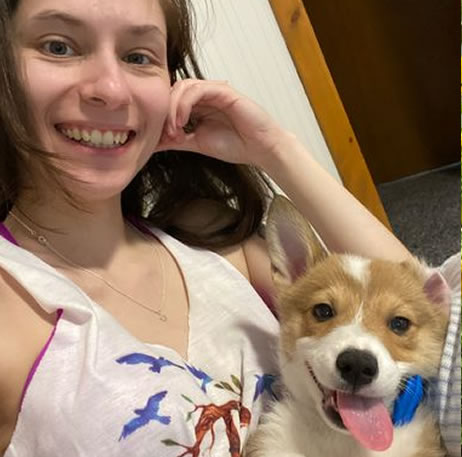
Even after your family receives approval, we will not accept deposits on puppies until they are 4 weeks of age. First and foremost, if there is to be a survival issue with a particular puppy, it will generally occur within the first 3 weeks of life. During life, we experience many pains, which quite honestly, cannot be avoided: However, there are some that can, and thus our rationale. Imagine if you will, learning of a litter, choosing a puppy, placing a deposit, deciding on a name, purchasing supplies and then sadly receiving a call that something horrible has happened. This is quite simply an avoidable pain.
When the babies are about 4 weeks old, we begin allowing families to initiate the selection process. Obviously, we cannot guarantee personality traits since so much happens developmentally once they leave our home (the old Nature versus Nurture thing). However, by 4 weeks of age, we have a pretty good glimpse of their developing personalities and make every effort to help you find the best fit for your family and home. Once the selection is complete and the 50% deposit is received, we then begin the process of preparing babies for their forever homes. This includes crate training, potty training and the use of the name you have chosen. The remainder of the cost is due when you pick up your little one.
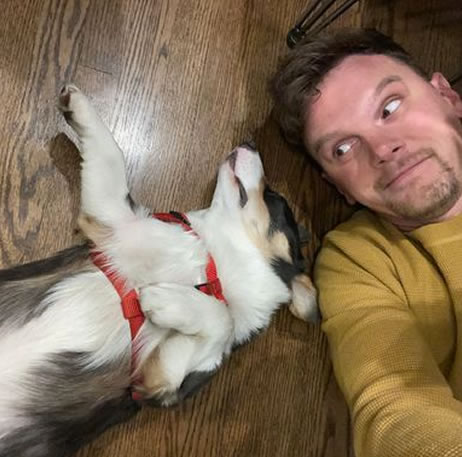
Cost
The cost of adoption is $2,500.

Registration & Deposit
Our little ones are sold with limited AKC registration. This basically means that the only thing you cannot do with your new fur baby is breed him/her. We do ask for a 50% deposit when a baby is chosen.
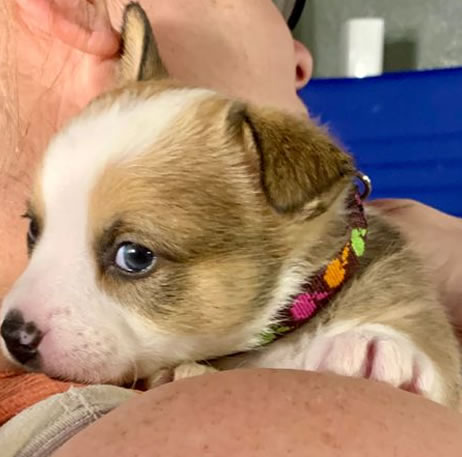
Genetics
Let's talk a little bit about genetics. Pembroke Welsh Corgis come in a variety of different colors. There are 16 different alleles that contribute to coat color. Gwidgie is a Black Headed Tri Color (BHT) and Renny is a Red and White (RW). Red and white is a dominant color pattern over the black headed tri color, hence all of their babies are also red and white.
Gwinny is a “bluie”, which means she is a Black Headed Tri-Color with the dilute gene. Gwidgie also carries the recessive dilute gene, which means in their litters, statistically 75% of the babies will be bluies with the remaining 25% being BHT. We do perform genetic testing on all of our dam's and sire's and will gladly provide you with the results.
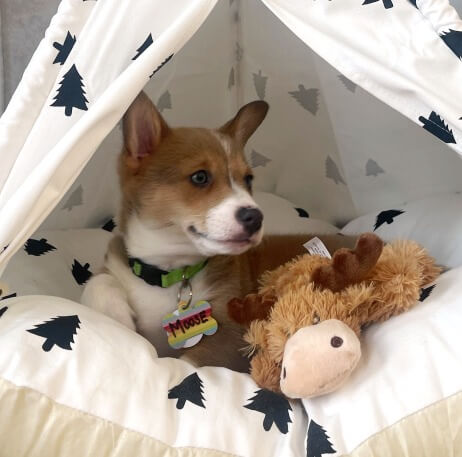
Shots - Microchip - Registration - Health Guarantee
All puppies come with a 1-year health guarantee for genetic defects, deworming at 2, 4, 6 and 8 weeks, the initial 5-way distemper/corona vaccination at 8 weeks, AKC Registration, microchipping and registration in the AKC reunite program.
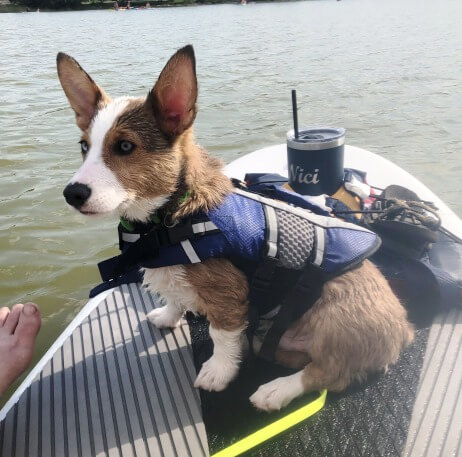
Let's Get Started!
I hope this has provided you with enough information to get started. If you wish to speak more, please feel free to call or text me (text preferred) at (616) 443-8968 or email me at .
What You'll Need To Know
Every Puppy Includes

Parental DNA Testing

Litter Visits
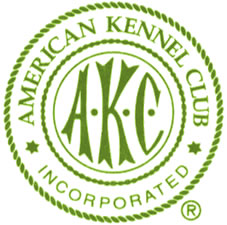
AKC Registration

Health Guarantee
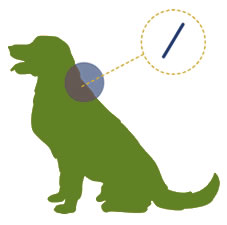
Microchipping

Lifetime Support
Puppy Praise
Find Us in Kalamazoo, Michigan
 Click for Directions to
Click for Directions to7001 Stadium Drive
Kalamazoo, Michigan 49009
Find Us in Kalamazoo, Michigan

